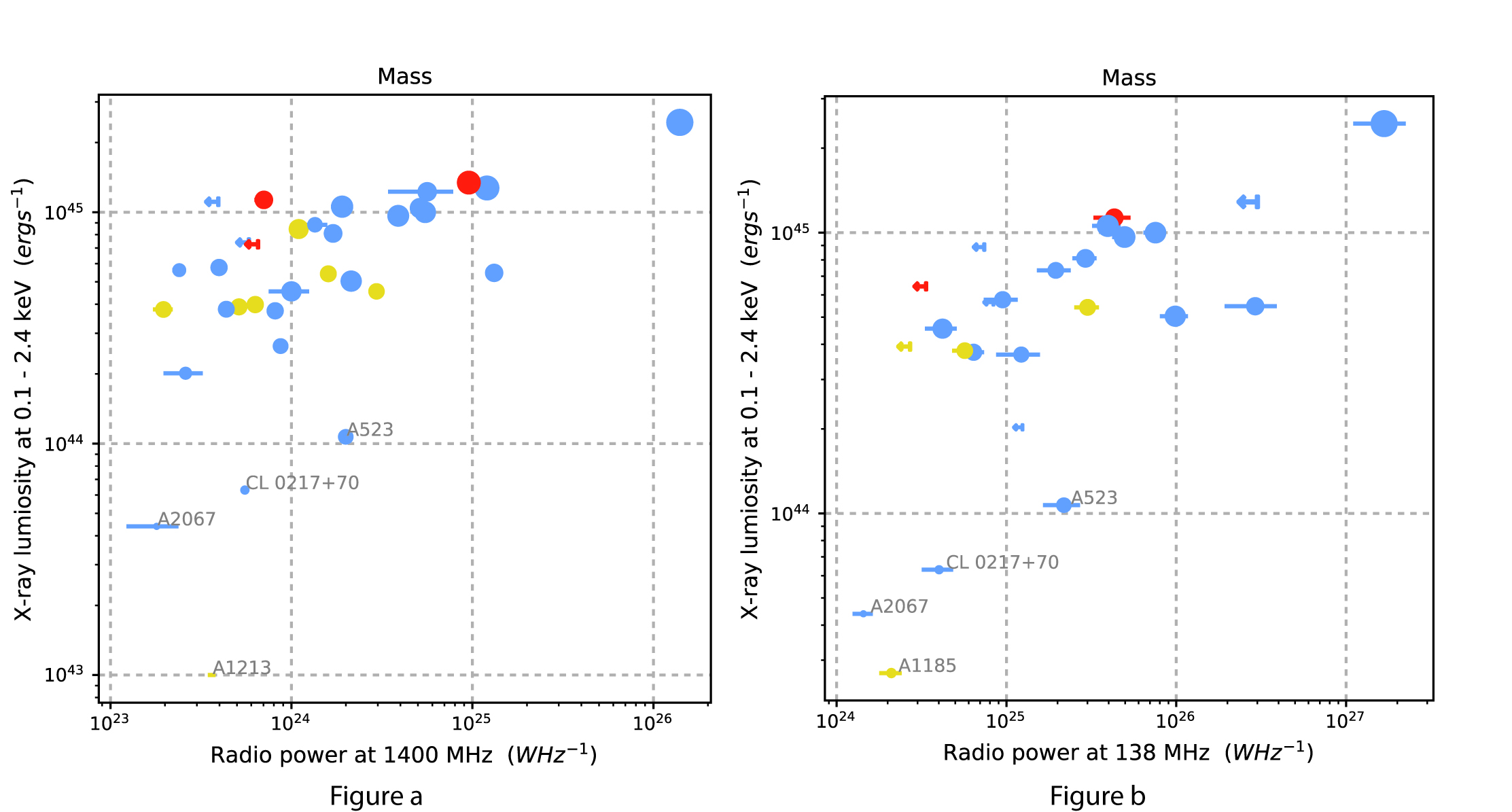Daily Image
30-08-2017A LOFAR/MSSS view of extended radio sources
| Submitter: | Chen Xie |
| Description: | So far, only about 80 clusters were discovered hosting diffused radio emission, such as radio halos, radio relics, and radio mini-halos (Kale er al. 2016). Those diffuse emissions are not associated with any individual cluster galaxy but with the intracluster medium (ICM). The merger processes and the mass of the cluster seem to be relevant for their formation, evolution and energetic. In previous work, people usually selected high X-ray luminosity or high mass clusters as their targets. In order to fully understand what parameters play what kind of roles in the phenomenon and evolution of extended emission in clusters, an unbiased sample with large spanning parameter space should be selected. In the first step of large search in Multifrequency Snapshot Sky Survey (MSSS), we focus on the radio halos. Our sample has 38 clusters, and we manage to recover the fluxes of 27 clusters (including upper limits). It is already a large cluster sample and doubles the number of clusters with diffuse radio emission at low frequency (<325 MHz). In previous work, P_1.4 - Lx correlation was found (figure(a)), which was also predicted by the turbulent re-acceleration model. For the first time, we derive the correlation between P_138 and Lx, which is consistent with the result at 1.4 GHz. It means our result at 138 MHz still favours the turbulent re-acceleration model. Besides that, we confirm the previous observational evidence (Giovannini et al. 2011) at the lower frequency (see, A523, CL0217+70, A2067, and A1185 in figure(b)) that giant radio halo can be associated with low luminosity X-ray clusters. In Figure a and b, the size of data points indicate the mass of clusters. And the color shows the cluster dynamic state (blue, red, and yellow for merging, relaxed, and no information, respectively). |
| Copyright: | n/a |
| Tweet |  |
